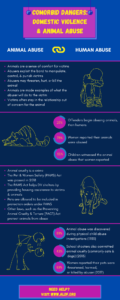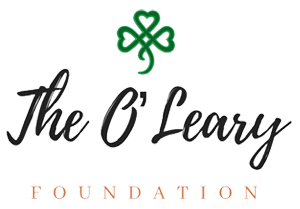- Arlana
- Sep, 16, 2024
- Blog
- No Comments
Introduction
Domestic violence and animal abuse intersect with one another more than you may know. This may be because animal abuse is historically separated from domestic abuse. Offenders can find countless ways to go through with the crime, either human or animal. This article will discuss them and more.
How are they linked?
Animals are beloved worldwide, especially pets, whether “a man’s best friend,” an emotionless emotional support cat, or even a greedy hamster. However, have you ever considered easily accessible wild animals, such as a woodchuck? Guess what? Hunting and harming animals can be linked to domestic violence. This is because the human victim is now more accessible than the wild victim.
Many people assume that animal abuse leads to human abuse. This is true for some cases; however, more offenders begin harming humans and then progress to animals. According to the FBI Law Enforcement Bulletin (LEB), one study showed that 16% of offenders began abusing animals before people.
Abusers get creative because they never want their “power” taken away. So what happens when they see even the slightest happiness radiate from their “prey?” Their blood boils like overflowing pasta water. They must destroy and conquer once again. Therefore, abusers will exploit a victim’s bond with their animal to continue manipulating, controlling, and punishing them.
What is considered animal abuse?
Again, abusers need to feel continuous control. They may buy the victim a pet, but take it away when angry. They may threaten, hurt, or kill the animal if the victim says they will leave. You may wonder, well how does that work? “It’s just an animal!” You may say. However, that is not the case and will never be. That “animal” is an animal, sure. However, the main thing is that it supports the victim. In Domestic Violence and Animal Welfare: The Science of Human-animal Interaction, Dolores Donovan shares how loneliness decreases when someone has a pet and sees it as a family, friend, or regular person. This is because the person projects human feelings, motives, and qualities on the animal, resulting in possible social support they would get from another person (Donovan 398). A lot of victims may have support from their families and friends but are too ashamed to tell them about their situation again or for the first time. Other victims may not have that worry at all. No problem is worse or better! Therefore, pets can be the sole support systems; they can’t talk back to you, but merely be there.
Physically harming the animal interferes with the victim psychologically because it can show what the abuser will do to them or remind them of when they were abused. Because of this, victims often remain in the violent relationship. According to LEB, 75% of women have reported their pets being abused by their offenders, with children witnessing 90% of the time. Moreover, studies have proved that 50% of all children are exposed to animal abuse. Nothing comes out of the blue! Therefore, these foul environments increase the risk of children becoming culprits. The LEB says it’s because they become desensitized and accepting of the abuse since it is familiar.
History and Laws Against Animal Cruelty
An animal at risk is a valid reason why a victim will stay with their abuser. Fortunately, many reports led to the Pet and Women Act (PAWS) in December 2018. According to LEB, the legislation provides housing assistance to domestic violence shelters. Also, victims have the will to protect their animals. This includes animals protected from interstate stalking, protection order violations, and restitution.
Also, the Preventing Animal Cruelty and Torture (PACT) Act protects animals from cruelty. Charlie Robinson and Victoria Clausen state that it is, “a federal law that prohibits the purposeful crushing, burning, drowning, suffocation, impalement, or other violent acts committed against animals, allowing the prosecution of crimes that affect interstate commerce or occur under federal jurisdictions” (Clausen, Robinson, 2021). The PACT Act is the first federal animal cruelty law to expand existing ones at the state level. The entire United States charges animal cruelty as a felony. However, penalties change from state to state. Most states only consider cats and dogs as pets, and others include birds, horses, and other animals. In 2016, “the FBI began tracking crimes against animals in the National Incident-Based Reporting System (NIBRS), in the same way it tracks other serious criminal offenses” (ALDF).
Before 2016, animal cruelty was a general crime in NIBRS. The data will help clarify who commits animal cruelty offenses, the most common animal cruelty jurisdictions, and associations with other crimes.
The Animal Legal Defense Fund (ALDF) provides several examples of how animal cruelty and human abuse are linked. In 1983, 88% of animal abuse was discovered during physical child abuse investigations. It is proved that children are most likely neglected and abused if they are cruel to animals. The Massachusetts Society for the Prevention of Cruelty to Animals and Northwestern University found that animal abusers are 5 times as likely to harm people in a 1997 study. Another experiment (2013) showed that 43% of school shooters also committed animal cruelty; the animals were mostly cats and dogs. In 2017, 89% of women reported their pets were threatened, harmed, or killed by their abusers. ALDF reports that “more than half of women in domestic violence shelters report that they delayed their escape out of fear for their animals.” These experiments prove how animal abuse is linked to human abuse, and how it can delay a victim’s escape from an abuser.
Want Quick Facts? Check out this Infographic!

References
Donovan, D. (n.d.). Domestic Violence and Animal Welfare: The Science of Human-Animal Interaction. Pdf Document. Retrieved September 11, 2024, from file:///Users/arlanacamille/Downloads/DV%20and%20Animal%20Welfare%20-%20The%20Science%20of%20Human-Animal%20Interaction.pdf
Robinson, Charlie M.A, M.S., and Victoria Clausen M.A. “The Link Between Animal Cruelty and Human Violence.” Www.Leb.Fbi.Gov, 10 Aug. 2021, leb.fbi.gov/articles/featured-articles/the-link-between-animal-cruelty-and-human-violence. Accessed 11 Sept. 2024.
“The Link Between Animal Cruelty to Animals and Violence Toward Humans.” Www.Aldf.Org, aldf.org/article/the-link-between-cruelty-to-animals-and-violence-toward-humans-2/. Accessed 11 Sept. 2024.
Sylvia’s Blog
- Comorbid Dangers: Domestic Violence & Animal Abuse September 16, 2024
- Pride Month : Raising Awareness of IPV in Queer Communities June 25, 2024
- Mental Health Awareness Month June 25, 2024





